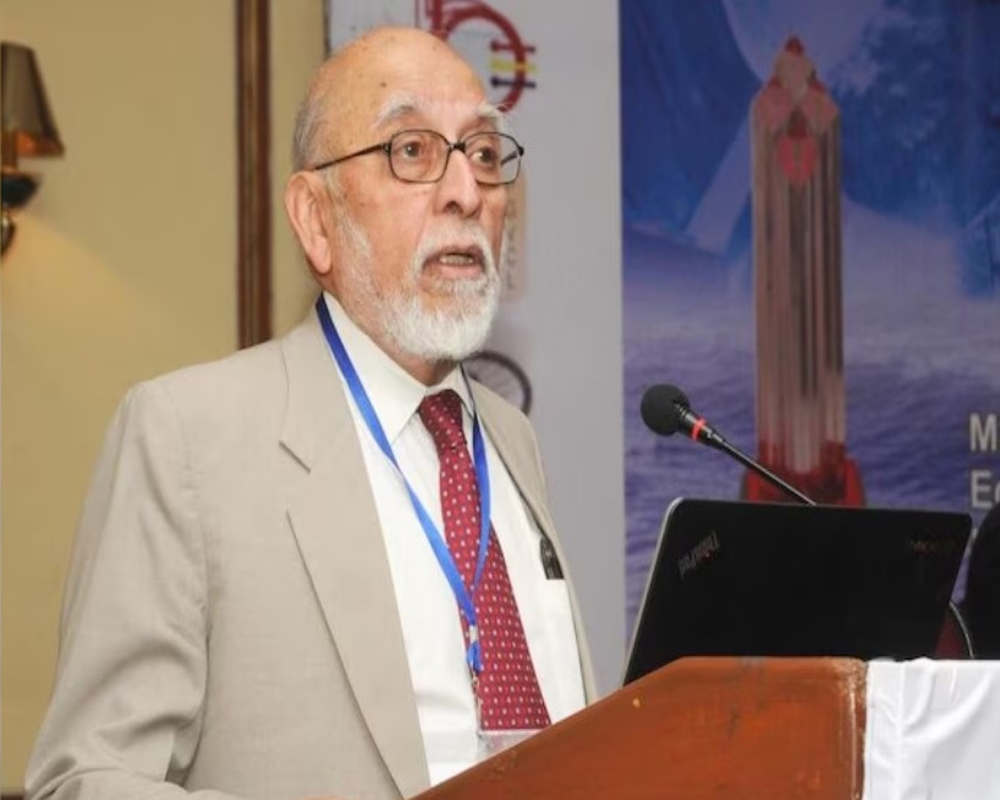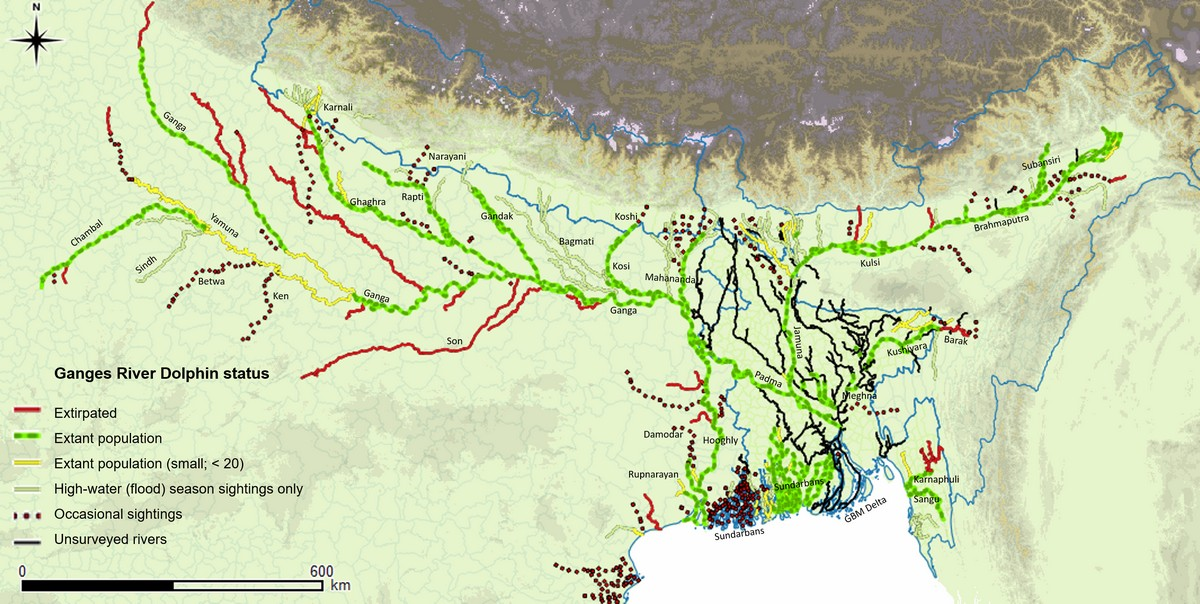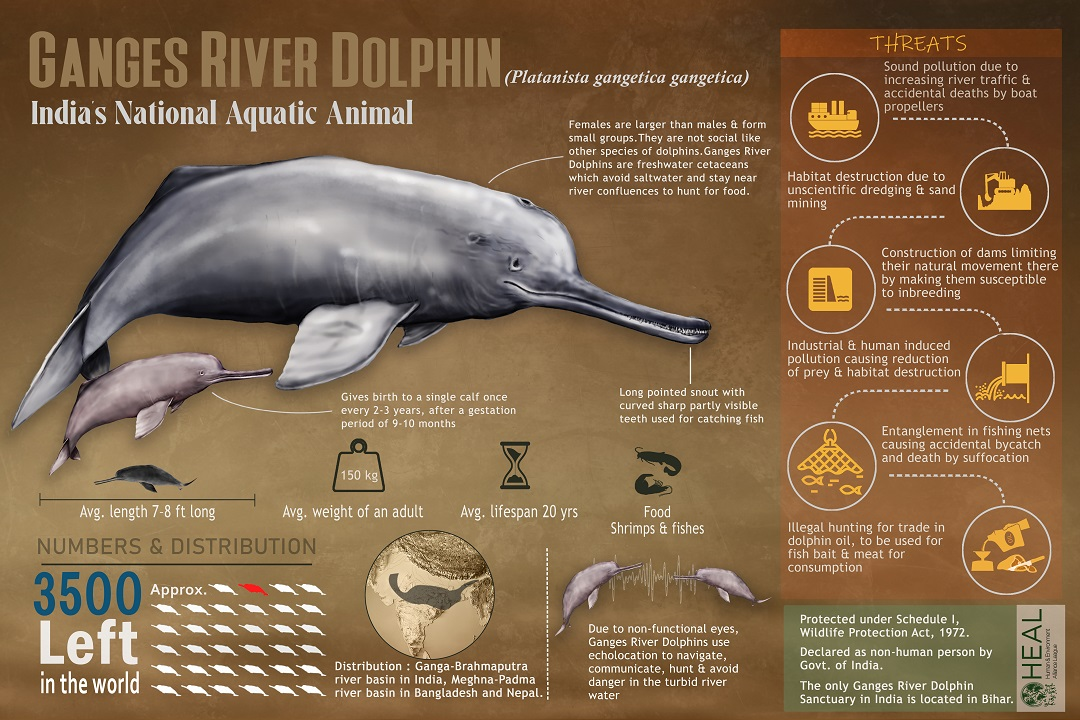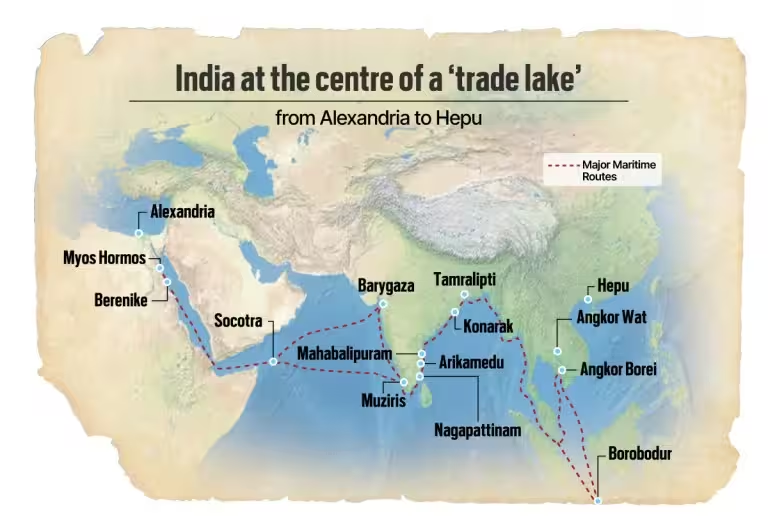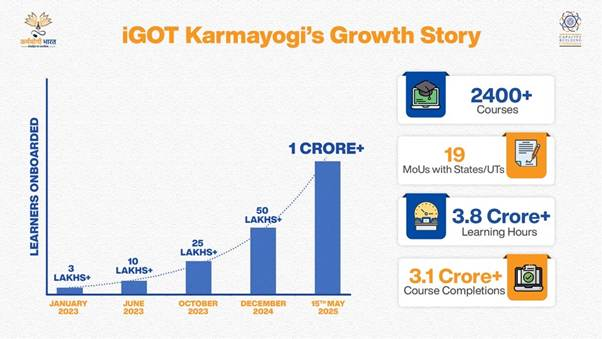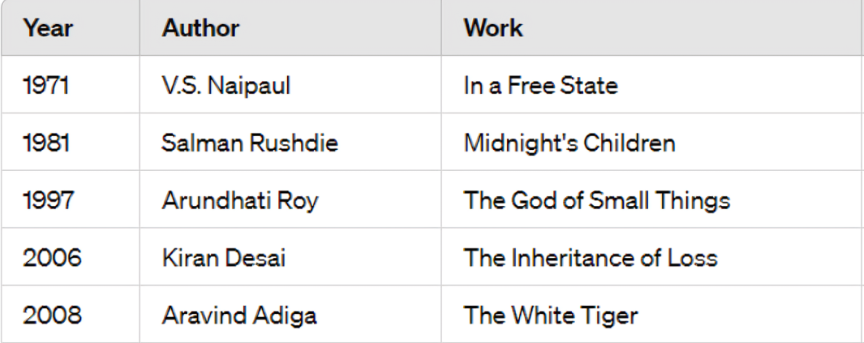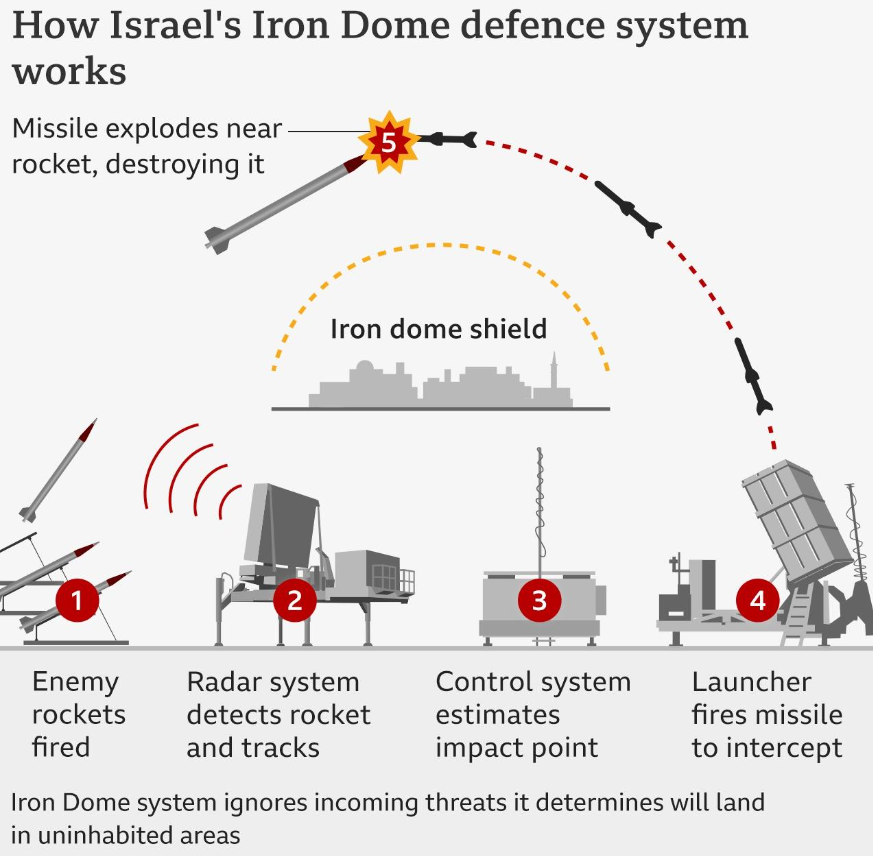Biodiversity & Environment
Climate Physical Risks in India
For Prelims: World Bank, Intergovernmental Panel on Climate Change (IPCC), Composite Water Management Index, Green Hydrogen, Drought-resistant Crops, Mangrove, National Manufacturing Mission, Small Modular Reactors (SMRs).
For Mains: Climate Physical Risks (CPRs) for India, Challenges in tackling CPRs, Strategies to address CPRs.
Why in News?
Recent reports, including from the World Bank, confirm India’s climate crisis, with Climate Physical Risks (CPRs) like rising temperatures, erratic monsoons, and severe disasters threatening over 80% of its population and economy.
What are Climate Physical Risks?
- About: Climate Physical Risks (CPRs) refer to the direct and indirect impacts of climate change on natural ecosystems, human societies, and economic systems.
- These risks arise from extreme weather events and long-term climatic shifts, leading to financial losses, operational disruptions, and threats to lives and livelihoods.
- Types: CPRs are categorized into two main types:
- Acute Physical Risks: They are short-term, high-impact events caused by extreme weather, such as hurricanes, cyclones, floods, heatwaves, droughts, and severe storms.
- Impacts include infrastructure damage, supply chain disruptions, loss of lives, and community displacement.
- Chronic Physical Risks: They are long-term, gradual changes in climate patterns, including rising sea levels, increasing temperatures, changing precipitation, and ocean acidification.
- These lead to reduced agricultural productivity, water scarcity, health risks, and biodiversity loss.
- Acute Physical Risks: They are short-term, high-impact events caused by extreme weather, such as hurricanes, cyclones, floods, heatwaves, droughts, and severe storms.
What are Climate Physical Risks (CPRs) for India?
- Rising Temperatures & Heatwaves: India's average temperature increased by approximately 0.7˚C between 1901 and 2018, while the tropical Indian Ocean's sea-surface temperature rose by about 1˚C from 1951 to 2015.
- The IPCC warns that each 0.5°C rise will worsen heat, rainfall, and drought extremes. Heatwaves in India could last 25 times longer by 2036–2065 if temperatures rise to 4oC by 2100.
- Erratic Monsoons: Analysis of long-term data shows a 27% increase in dry spells during 1981–2011 compared to 1951–1980, alongside more intense wet spells in the summer monsoon.
- In central India, extreme daily rainfall (>150mm) increased by 75% from 1950 to 2015.
- Droughts & Water Scarcity: According to NITI Aayog's 2019 Composite Water Management Index, approximately 600 million Indians face high to extreme water stress.
- 12% of India’s population faces ‘Day Zero’ conditions (water supply is nearly depleted). By 2030, water demand may double supply, risking severe scarcity for millions and a 6% GDP loss.
- Rising Sea Levels: According to the Global Assessment Report on Disaster Risk Reduction 2022, by 2100, around 27 million people in India could be impacted by global sea-level rise (projected to rise a foot by 2100).
- Food Security Crisis: Climate change could reduce wheat yields by 19.3% by 2050 and 40% by 2080, while kharif maize yields may decline by 18% and 23% in the same periods.
- Rising CO₂ levels may lower iron, zinc, and protein in staple crops like rice, wheat, maize, and legumes, risking nutritional deficiencies for over a billion people globally.
- Economic & Infrastructure Damage: Climate-induced events like floods and heatwaves damage infrastructure. India lost USD 3 billion to floods in the last decade—10% of global losses.
What are the Challenges in Tackling CPRs for India?
- Fossil fuel-centric Energy Model: Despite renewable gains, 77% of India’s electricity (FY23) still comes from coal.
- Lack of Climate Finance: India needs USD 10.1 trillion by 2070 for net-zero, but green financing falls short.
- Technological Lags: India’s green tech sector—especially battery storage and solar panels—depends heavily on imports, with over half (USD 3.89 billion of USD 7 billion in FY24) coming from China.
- Limited domestic manufacturing hampers the Production Linked Initiative (PLI) Scheme and slows green self-reliance.
- Vulnerability to Renewable Projects: Ironically, climate impacts hinder renewable energy.
- Wind power in Tamil Nadu may drop 5% in 2024–25 due to erratic winds. High temperatures reduce solar PV efficiency by 0.4–0.5 % per degree Celsius. Dust can reduce PV output by up to 60 %, especially in desert regions.
- Limited R&D Investment in Green Technologies: India spends just 0.7% of GDP on R&D, lagging behind global leaders like Israel (4.6%), South Korea (4.5%).
- This limits innovation in green hydrogen, energy storage, and carbon capture, where India trails despite being the third-largest CO₂ emitter.
- Challenges in Electric Vehicles (EVs): The transport sector, responsible for 14% of emissions, struggles with EV adoption due to limited charging infrastructure (25,000 stations in 2024) and high costs.
- Fragmented Data: India’s CPR assessments remain fragmented, with efforts dispersed among various agencies and institutions employing different methodologies, lacking a unified system despite resources like IIT Gandhinagar’s flood maps and IMD’s vulnerability atlases.
- Reliable CPR projections are limited by global climate models that overlook India’s hyper-local climate.
What are Government Initiatives to Tackle CPRs?
What Strategies can India Implement to Address CPRs?
- Agricultural Sustainability: Building resilience in agriculture and water management is vital for climate adaptation.
- Promoting drought-resistant crops and efficient irrigation helps mitigate water scarcity and optimize usage.
- Robust Urbanisation: Implement climate-resilient building codes and sponge city planning to manage water and reduce flooding.
- Develop urban forests, heat action plans, and sustainable transport to mitigate heat, cut emissions, and improve air quality.
- Coastal Adaptation: Climate-resilient ports, mangrove restoration, and strengthened early warning systems will protect against climate impacts and enhance preparedness.
- Decentralized Adaptation: Districts should form expert climate cells to assess vulnerabilities and craft tailored solutions combining traditional knowledge and scientific data.
- Domestic Clean Energy: India’s National Manufacturing Mission targets reducing dependence on foreign clean energy tech like solar panels and batteries, supporting local production of solar cells, wind turbines, and storage.
- India also promotes indigenous Small Modular Reactors (SMRs) to boost nuclear energy and energy security.
Conclusion
India faces escalating Climate Physical Risks (CPRs) that threaten its people, economy, and ecosystems. While government initiatives mark progress, addressing CPRs demands urgent, unified action. Strengthening adaptation, investing in green technology, and decentralizing climate strategies are essential to build resilience, safeguard development gains, and secure a sustainable future.
|
Drishti Mains Question: Examine the vulnerabilities of renewable infrastructure to Climate Physical Risks (CPRs) and suggest mitigation strategies. |
UPSC Civil Services Examination, Previous Year Question:
Prelims
Q. In the context of India’s preparation for Climate-Smart Agriculture, consider the following statements: (2021)
- The ‘Climate-Smart Village’ approach in India is a part of a project led by the Climate Change, Agriculture and Food Security (CCAFS), an international research programme.
- The project of CCAFS is carried out under Consultative Group on International Agricultural Research (CGIAR) headquartered in France.
- The International Crops Research Institute for the Semi-Arid Tropics (ICRISAT) in India is one of the CGIAR’s research centres.
Which of the statements given above are correct?
(a) 1 and 2 only
(b) 2 and 3 only
(c) 1 and 3 only
(d) 1, 2 and 3
Ans: (d)
Q. With reference to ‘Global Climate Change Alliance’, which of the following statements is/are correct? (2017)
- It is an initiative of the European Union.
- It provides technical and financial support to targeted developing countries to integrate climate change into their development policies and budgets.
- It is coordinated by World Resources Institute (WRI) and World Business Council for Sustainable Development (WBCSD).
Select the correct answer using the code given below:
(a) 1 and 2 only
(b) 3 only
(c) 2 and 3 only
(d) 1, 2 and 3
Ans: (a)
Mains
Q. Describe the major outcomes of the 26th session of the Conference of the Parties (COP) to the United Nations Framework Convention on Climate Change (UNFCCC). What are the commitments made by India in this conference? (2021)
Q. ‘Climate Change’ is a global problem. How will India be affected by climate change? How Himalayan and coastal states of India be affected by climate change? (2017)


Facts for UPSC Mains
Dr. M. R. Srinivasan and India’s Nuclear Power Programme
Why in News?
Dr. Malur Ramasamy Srinivasan, former Chairman of the Atomic Energy Commission (AEC) and a pioneer of India’s nuclear programme, passed away, marking the end of a remarkable era in Indian atomic energy.
Who was Dr. Malur Ramasamy Srinivasan?
- Contributions: Srinivasan joined the Department of Atomic Energy (DAE) in 1955 and worked under Dr. Homi Jehangir Bhabha, contributing to India’s first nuclear reactor, Apsara.
- He served as the Principal Project Engineer for India’s first atomic power station at Tarapur and later as the Chief Project Engineer for the Madras Atomic Power Station.
- He became the Founder-Chairman of the Nuclear Power Corporation of India Limited (NPCIL), under his leadership, 18 nuclear power units were developed.
- Global and National Influence: Dr. Srinivasan served as Senior Advisor to the International Atomic Energy Agency, Vienna (1990–92), Member of the Planning Commission (1996–98), and National Security Advisory Board (2002–04, 2006–08). He also chaired the Karnataka Task Force on Higher Education (2002–04).
- Honours and Awards: Dr. Srinivasan received Padma Shri (1984), Padma Bhushan (1990), and Padma Vibhushan (2015).
What is India’s Nuclear Power Programme?
- About: India’s Nuclear Power Programme was primarily formulated by Dr. Homi J. Bhabha, a prominent Indian physicist often called the "father of the Indian nuclear program."
- It is a strategic, three-stage plan aimed at harnessing atomic energy primarily for peaceful purposes, such as electricity generation, while ensuring self-reliance in energy resources.
- It is designed to make optimal use of India’s limited uranium reserves and abundant thorium resources.
- India’s programme is based on a closed fuel cycle; each stage generates the fuel for the next, enhancing resource utilisation and reducing waste.
- Three-Stage Nuclear Power Programme:
- Stage 1: Using Pressurized Heavy Water Reactors (PHWRs) fueled by natural uranium to generate power and produce plutonium and depleted uranium as by-products.
- In Stage 1, it is estimated that about 420 gigawatt-years (GWe-yrs) of electricity can be produced.
- Stage 2: Deploying Fast Breeder Reactors (FBRs) that use plutonium from PHWRs to breed more fuel while generating electricity (additional 54,000 GWe-yrs). FBRs also produce uranium-233 from thorium.
- Stage 3: It involves utilizing thorium-based reactors to convert thorium into fissile uranium-233, ensuring a sustainable and long-term nuclear fuel supply.
- It aims at large-scale power generation using India's abundant thorium reserves. This stage is projected to yield about 358,000 GWe-yrs of electricity, helping secure energy needs beyond the depletion of coal.
- The world's first thorium-based nuclear plant, "Bhavni," using Uranium-233, is being set up at Kalpakkam in Tamil Nadu.
- Stage 1: Using Pressurized Heavy Water Reactors (PHWRs) fueled by natural uranium to generate power and produce plutonium and depleted uranium as by-products.
- Current Status: Stage 1 is commercially mature. The second stage with FBRs began with a 500 MWe reactor at Kalpakkam, Tamil Nadu.
- Stage 3 thorium-based systems have been developed at the pilot scale; however, commercial deployment is yet to begin.
- Additionalities to the Three-Stage Program: To accelerate nuclear power capacity, India is complementing its three-stage program with imported reactors.
- Kudankulam Nuclear Power Project (KKNPP), built with Russian collaboration, currently operates two 1,000 MWe VVER (water-water energy) reactors since 2013 and 2016, with four more under construction.
- VVER reactors, known for safety and reliability, are used globally and have clocked over 2,000 reactor-years of operation.
- Nuclear energy is the 5th-largest source of electricity for India which contributes around 3% of the total electricity generation in the country.
- Kudankulam Nuclear Power Project (KKNPP), built with Russian collaboration, currently operates two 1,000 MWe VVER (water-water energy) reactors since 2013 and 2016, with four more under construction.
- Future Plans and Projections: The study by the Department of Atomic Energy (DAE), estimates the nuclear share to be about 8.6% by the year 2032 and 16.6% by the year 2052.
|
Drishti Mains Question: Explain India’s three-stage nuclear power programme and evaluate its role in achieving self-reliance in nuclear energy. |
UPSC Civil Services Examination, Previous Year Questions (PYQs)
Prelims
Q. In India, why are some nuclear reactors kept under “IAEA safeguards” while others are not? (2020)
(a) Some use uranium and others use thorium
(b) Some use imported uranium and others use domestic supplies
(c) Some are operated by foreign enterprises and others are operated by domestic enterprises
(d) Some are State-owned and others are privately owned
Ans: (b)
Mains
Q. With growing energy needs should India keep on expanding its nuclear energy programme? Discuss the facts and fears associated with nuclear energy. (2018)


Important Facts For Prelims
Gangetic Dolphins
Why in News?
A recent study by the Wildlife Institute of India (WII) has highlighted severe chemical pollution risks posing threats to the endangered Gangetic dolphins (Platanista gangetica).
What are the Key Facts Related to Gangetic Dolphins?
- About: The Ganga River Dolphin, also known as the “Tiger of the Ganges,” was officially discovered in 1801.
- It is India’s National Aquatic Animal (declared in 2009) and State Aquatic Animal of Assam.
- It acts as a reliable indicator of river ecosystem health, highlighting biodiversity and water quality.
- Habitat: Historically found in the Ganges-Brahmaputra-Meghna and Karnaphuli-Sangu river systems across India, Nepal, and Bangladesh. But the species is extinct from most of its early distribution ranges.
- Features: Exclusively a freshwater species, they are functionally blind and rely on ultrasonic echolocation to locate prey.
- Generally solitary or in small groups, often seen as mother-calf pairs.
- It is locally called 'Susu' due to the sound it makes while exhaling.
- Population: There are 6,327 river dolphins in India, according to the first nationwide survey under Project Dolphin (2020).
- The population of Ganges dolphins has declined by over 50% since 1957, with a 25% shrinkage in range.
- Threat: A WII study has found high levels of harmful Endocrine-Disrupting Chemicals (EDCs) in fish consumed by Gangetic dolphins.
- Pollutants such as industrial chemicals (DEHP, DnBP), banned pesticides (DDT, Lindane), and heavy metals (arsenic, mercury, cadmium), mainly from agricultural runoff, untreated industrial effluents, vehicular emissions, and poor waste management, damage hormonal and reproductive systems.
- Additional threats include fishing gear entanglement, poaching, habitat loss from dams and water extraction, and vessel noise.
- Protection Status:
- IUCN: Endangered
- Indian Wildlife (Protection) Act 1972 : Schedule I
- Convention on International Trade in Endangered Species (CITES): Appendix I
- Convention on Migratory Species (CMS): Appendix 1
India’s Initiatives for Gangetic Dolphins Protection
- Project Dolphin: Implements special conservation measures for Gangetic River Dolphins, recognized as umbrella species.
- The project aims to protect both marine and riverine dolphins along with related cetaceans. Funded by the Ministry of Environment, Forests and Climate Change,
- Vikramshila Ganges Dolphin Sanctuary has been established in Bihar. It is India’s only dedicated dolphin sanctuary.
- National Ganga River Dolphin Day (5th October)
UPSC Civil Services Examination, Previous Year Question:
Q. Which one of the following is the national aquatic animal of India? (2015)
(a) Saltwater crocodile
(b) Olive ridley turtle
(c) Gangetic dolphin
(d) Gharial
Ans: (c)


Important Facts For Prelims
INSV Kaundinya
Why in News?
The Indian Navy recently inducted the Indian Naval Sailing Vessel (INSV) Kaundinya, the 1st ‘stitched ship’ using ancient stitched shipbuilding method (Tankai method) to revive forgotten shipbuilding techniques.
- It is named after Kaundinya, a legendary Indian mariner, and set to embark on a historic voyage to Oman by the end of 2025, retracing ancient trade routes.
- It is executed through a tripartite agreement between the Indian Navy, Ministry of Culture, and a Goa-based shipbuilding company.
What are Key Facts About INSV Kaundinya?
- About INSV Kaundinya: It is a stitched ship modeled after a vessel depicted in the 5th-century Ajanta cave paintings.
- It is inspired by Ajanta murals, the ancient text Yuktikalpataru (written by King Bhoja in 9th century CE), and accounts of foreign travellers who described stitched Indian ships.
- It features symbolic motifs like:
- Gandabherunda, two-headed eagle of the Kadamba dynasty who ruled the Konkan coast
- Sun motifs on sails
- Simha Yali (mythical lion) on the bow
- Harappan-style stone anchor.
- About Kaundinya: Kaundinya was a 1st-century Indian mariner, known for sailing to the Mekong Delta, where he married warrior queen Soma and co-founded the Kingdom of Funan (modern-day Cambodia), one of the earliest Indianised states in Southeast Asia.
- The Khmer and Cham dynasties of modern-day Cambodia and Vietnam trace their origins to this union.
- His story is preserved in Cambodian and Vietnamese sources, though not in Indian records, and he is regarded as the first named Indian mariner to make overseas voyages with global historical impact.
- Tankai Method: It is a 2,000-year-old traditional Indian shipbuilding technique known for its manual craftsmanship, indigenous materials, and non-industrial techniques. Key Features include:
- Stitched Plank Technique: Teak, sal, or mango wood planks are drilled and stitched with coir ropes, then sealed with cotton, resin, and fish oil for waterproofing.
- No Metal Fasteners: Unlike European methods using iron nails, the Tankai method avoided metal to prevent rust, making ships lighter, more flexible, and easier to repair.
- Unique Construction: The hull is built first, then added ribs, allowing greater flexibility and durability in rough seas, unlike Western frame-first methods.
- Indigenous Materials: Uses coir rope, dammar resin, and animal fat, all resistant to seawater.
UPSC Civil Services Examination Previous Year Question (PYQ)
Prelims
Q. Belt and Road Initiative is sometimes mentioned in the news in the context of the affairs of (2016)
(a) African Union
(b) Brazil
(c) European Union
(d) China
Ans: (d)


Rapid Fire
iGOT Karmayogi
The iGOT Karmayogi digital learning platform, central to India’s National Programme for Civil Services Capacity Building (Mission Karmayogi), has achieved a landmark milestone with over 1 crore civil servants registered, reflecting rapid digital adoption and a transformative shift in public administration.
- Top 5 states by registration are Bihar, Andhra Pradesh, Madhya Pradesh, Rajasthan, Uttar Pradesh. iGOT Karmayogi issued over 3.1 crore learning certificates, totaling 3.8 crore learning hours completed.
- iGOT Karmayogi: Managed by Karmayogi Bharathas, iGOT Karmayogi offers over 2,400 courses in 16 languages, all courses align with the indigenous Karmayogi Competency Model based on Indic wisdom and Mission Karmayogi principles.
- Karmayogi Bharat, a 100% government-owned not-for-profit Special Purpose Vehicle, incorporated under the Companies Act, 2013.
- Mission Karmayogi: It is aimed at creating a professional, well-trained, and future-ready civil service aligned with India’s developmental priorities and national programs.
- The mission promotes a shift from rule-based to role-based training, and embraces a competency-driven approach that focuses on the right blend of Attitude, Skills, and Knowledge (ASK).
- It follows the 70-20-10 model (70% learning through experience, 20% via peers, and 10% from formal training). It also links learning with career goals and ensures objective performance evaluation.
| Read more: National Learning Week Under Karmayogi Mission |


Rapid Fire
Judicial Accountability and the K Veeraswami Judgment, 1991
The Vice President challenged the constitutional basis of in-house inquiries and called for a review of the K Veeraswami judgment, 1991 following the seizure of cash at Justice Varma’s residence, as the SC rejected FIR petitions against Justice Varma and allowed the in-house inquiry to continue.
- In-House Inquiry: An in-house inquiry is conducted by a panel of judges appointed by the Chief Justice of India (CJI) to determine if there is a prima facie case against a judge.
- The CJI’s powers over errant judges are limited to transferring or withdrawing work assigned to them and recommend impeachment for the concerned judge.
- Under the Constitution, impeachment under Article 124 is the only constitutional removal process but has never succeeded in 75 years.
- In 2019, then CJI Ranjan Gogoi permitted the CBI to register an FIR against Justice S N Shukla while CJI Dipak Misra had recommended impeachment, which the government ignored.
- K Veeraswami Judgment, 1991: It classified judges as public servants under the Prevention of Corruption Act but requires CJI approval for prosecution (registering FIR), protecting the judiciary from executive interference with built-in immunity.
- Immunity Under the Constitution: Unlike the President and Governors (Article 361), there is no immunity for judges under the Constitution.
- The Vice President argues that sanction for prosecution must come from the authority that appoints the public servant i.e., the President of India, vested with executive power under Article 53.
| Read More: Judicial Transfers and In-House Inquiry |


Rapid Fire
Heart Lamp wins 2025 International Booker Prize
“Heart Lamp,” a short story collection by Banu Mushtaq, translated into English by Deepa Bhasthi, became the first Kannada work to win the 2025 International Booker Prize, marking a historic moment for Indian regional literature.
- Heart Lamp features stories portraying women’s struggles under patriarchy, echoing the Bandaya Sahitya movement and highlighting universal themes of gender discrimination.
- The 1970s Bandaya movement ignited literary and social activism around women's rights, and Dalit issues, influencing politics and literature across Karnataka and India.
- International Booker Prize: Formerly known as the Man Booker International Prize, it is a prestigious annual award for translated fiction, honoring the best long-form works or short story collections published in the UK or Ireland. It is awarded by the Booker Prize Foundation, UK.
- The prize awards Great Britain Pound (GBP) 50,000, equally shared between the author and the translator. Additionally, each shortlisted author and translator receives GBP 2,500.
- Booker Prize: The Booker Prize is given each year to the best novel written in English and published in the UK or Ireland. Writers from any country can win, as long as their book is originally written in English.
- Indian Booker Prize Laureates:
| Read more: International Booker Prize 2024 |


Rapid Fire
Golden Dome Missile Defence Project
The US President announced the creation of a ‘Golden Dome’ missile defence programme to counter advanced aerial threats, including missiles launched from space.
- About: It is a missile defense project with space-based sensors and interceptors, designed to create a multilayered shield, neutralize hypersonic, ballistic, cruise missiles, and drones from anywhere in the world—including space.
- Thousands of satellites will orbit Earth to intercept missiles shortly after launch—a concept first explored by Nazi Germany during World War II, and by the Soviet Union and the US during the Cold War.
- It draws inspiration from Israel's Iron Dome and Ronald Reagan’s Strategic Defense Initiative (Star Wars project), aiming to deploy a multi-layered missile shield.
- Comparison with Iron Dome: The Golden Dome is an ambitious next-generation defense system covering land, sea, and space, while the Iron Dome is a short-range, ground-based system that relies only on radar, not satellites.
- Similar Initiatives: Few countries like the US, China, France, Japan, Russia, the United Kingdom have a Space Force (military branch responsible for conducting operations in outer space).
| Read More: Strategic Defence Technologies in India |



